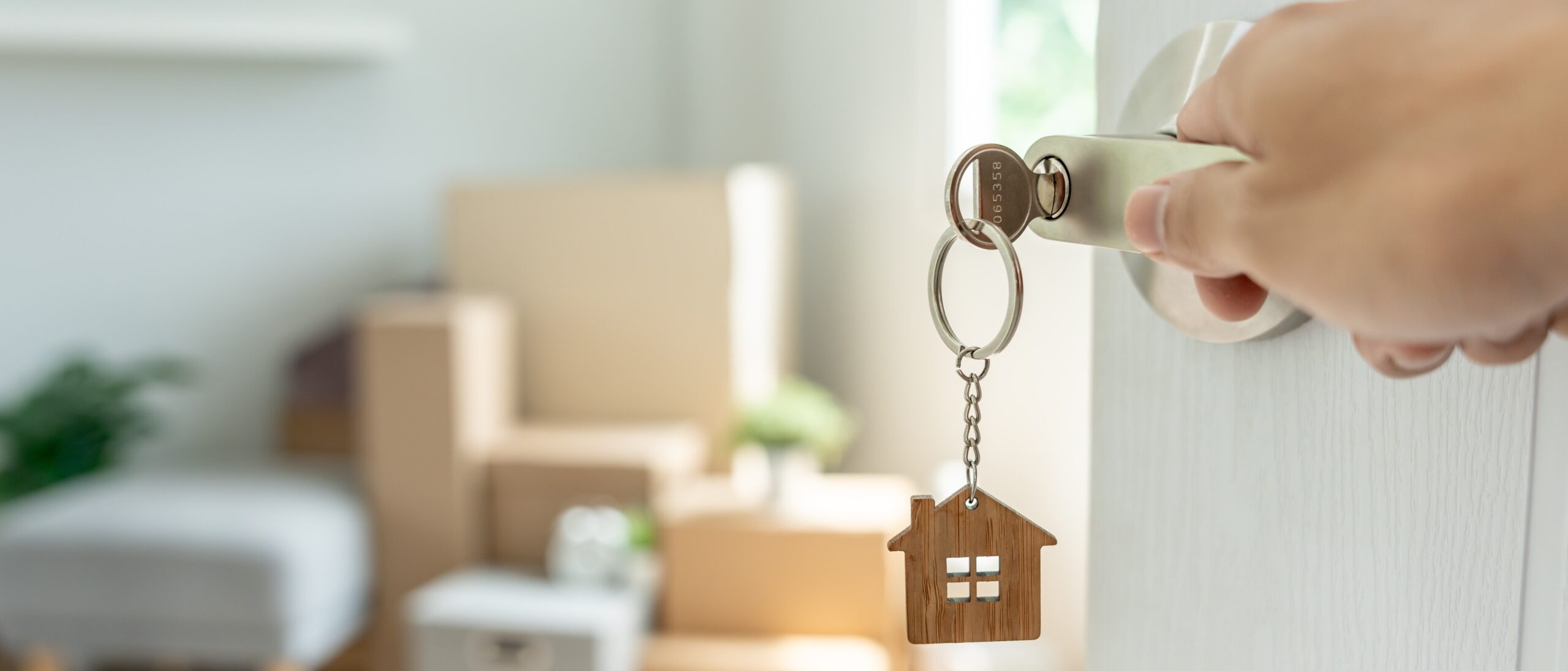
How to inspect a property before buying
Buying a property is one of the most significant investments you’ll ever make, and inspecting it thoroughly before finalising the deal is crucial. A property inspection can help you identify any potential issues or areas of concern, allowing you to make an informed decision about whether to buy the property or not.
But how do you go about it? What do you need to be mindful of? Whether you’re a first-time buyer or an experienced investor, our tips will help you make the most of your property inspection and ensure you end up with the perfect home or investment property.
How do you inspect a property?
How to prepare for a home inspection
Preparing for a home inspection is essential if you want to make the most of your property inspection. A well-prepared buyer is more likely to identify any potential issues with the property and make an informed decision about whether to move forward with the purchase or not.
Here’s what you can do to make sure you’re putting your best foot forward:
- Do your research: Before you go to view the house, do some research on the property and the area it’s located in to identify any potential issues or concerns..
- Bring a checklist: It’s easy to forget important details when viewing a house, so bring a checklist with you to help you keep track of everything. See below for our checklist.
- Prepare questions: The real estate agent or seller should be able to answer any questions you have about the property and its history.
- Charge your phone for photos: Taking photos or videos during the inspection can be helpful for future reference. Just make sure you ask for permission before taking any photos or videos.
What to look for at an open house inspection
Attending a home open is an important opportunity to assess whether a property is a good fit for you, and knowing what to look for when inspecting a house is crucial. Look for signs of good maintenance, functionality of the rooms, quality of finishes, and potential issues such as water damage or pest infestations. Consider the surrounding neighbourhood and any features or benefits of the property that may be particularly attractive to you.
Here’s what to look for when conducting a visual inspection of the property.
Things to look for in the property’s interior
- The overall condition of the interior: Look for signs of wear and tear, such as peeling paint, cracks in the walls and ceilings, or damaged flooring. Also check for signs of water damage.
- The layout and functionality of the rooms: Consider whether the rooms are well-designed and functional for your needs. Look for features such as ample storage, natural light, and adequate ventilation.
- The condition of the fixtures and fittings: Check the condition of fixtures such as light switches, door handles, and taps to ensure they are in good working order. Look for signs of rust, corrosion, or other damage.
- Consider the quality of the finishes, such as the materials used for flooring, cabinetry, and countertops. High-quality finishes can add value to a property and may be worth paying extra for.
- The presence of any hazardous materials: Be on the lookout for any hazardous materials such as asbestos or lead-based paint, especially in older properties.
What to check outside of the house?
- The condition of the roof: Look for signs of damage or wear and tear, such as missing or broken tiles, rusted metal, or sagging areas.
- The condition of the walls: Check the condition of the walls for any cracks, damage, or signs of moisture. This can indicate potential structural issues or leaks.
- The condition of the gutters and downspouts: Inspect the gutters and downspouts for any signs of damage or blockages. Poorly functioning gutters can lead to water damage and erosion.
- The condition of the landscaping: Assess the condition of the lawn, trees, and other landscaping features. Look for any signs of damage, such as dead or dying plants or tree roots that may be encroaching on the house.
Should you inspect a property multiple times?
Inspecting a property multiple times is often a good idea, especially if you’re seriously considering making an offer. A second or even third inspection can give you a better understanding of the property and its condition, allowing you to identify any potential issues or areas of concern that you may have missed during the initial inspection. Ultimately, inspecting a property multiple times can give you peace of mind and help you make an informed decision about whether the property is right for you.
Can I inspect again after making an offer?
In Australia, contracts for the sale of property often include a building and pest inspection contingency, which allows the buyer to inspect the property and have work completed if major issues are identified. If the contract does not include a contingency, additional inspections after making an offer may be more difficult. It’s important to work with a conveyancer or solicitor to understand the terms of the contract and any contingencies that may apply. Multiple inspections can add to the cost and time involved in the buying process.
Questions to ask at the property inspection
The questions you ask at a property inspection will depend on the property and your own needs as a buyer. But if you’re wondering what to ask at a house inspection, there are a few questions you can start with:
- Are there any known issues with the property’s foundation or structural integrity?
- Has the AC system been serviced recently, and is it in good working order?
- Are there any plumbing issues or leaks?
- Are there any electrical issues or safety concerns?
- Has the property ever had any pest infestations or other issues?
- How old are the appliances, and are they in good working order?
- Has the property been insulated, and if so, what is the condition of the insulation?
- What repairs or renovations have been done on the property in the past?
- Are there any known issues or concerns with the neighbourhood or surrounding areas?
- Are all structures approved by the local council?
Buying a house inspection checklist
What is a red flag on a home inspection?
Some common red flags on a home inspection may include:
- Major structural issues: Cracks or settling in the foundation, sagging floors or roof, or other major structural issues can indicate serious problems with the property’s stability and safety.
- Electrical issues: Faulty wiring, outdated electrical systems, or other electrical issues can pose serious safety hazards. Always ensure you obtain an electrical safety certificate.
- Plumbing issues: Leaks, water damage, or other plumbing issues can cause significant damage to the property and pose health hazards.
- Water damage: Signs of water damage, such as stains or mould, can indicate a potential problem with leaks or moisture in the property.
- Pest infestations: Evidence of pests such as termites or rodents can cause significant damage to the property and be difficult and costly to address.
- Environmental hazards: Issues such as asbestos, lead paint, or mould can pose health hazards and require significant remediation.
It’s important to take red flags seriously and consider the potential impact on the property’s value, safety, and livability. If you encounter any red flags during a home inspection, it’s a good idea to consult with a professional to assess the issue and determine the best course of action.
Can I back out of buying a house after the inspection?
This can vary from state to state, so it’s important to check the laws in your state before embarking on your home-buying journey. Some states, such as Queensland, New South Wales, Australian Capital Territory, and Victoria have a cooling-off period – however, you may be charged a fee for backing out of the sale during the cooling off period.
Other states, like WA and Tasmania, do not have a cooling-off period. Make sure you check whether you can back out of buying a house after the inspection in your state, and what the potential penalties may be.
Building and pest inspections
Building and pest inspections are important when considering what inspections to get when buying a house. A building inspection assesses the condition of the property, including its structural integrity and any defects or damage. A pest inspection examines the property for evidence of pest infestations, such as termites or rodents, which can cause significant damage and be difficult and costly to address. These inspections can help buyers identify any issues with the property before finalising the sale, allowing them to make informed decisions and negotiate with the seller if necessary. It’s recommended that buyers engage a qualified building inspector to conduct these inspections.
Read more about building and pest inspections.
What is a pre-settlement inspection?
When buying a house, the final inspection is known as the pre-settlement inspection, where a buyer can view a property they are purchasing before settlement occurs. The purpose of the inspection is to ensure that the property is in the same condition as when the buyer agreed to purchase it and that any agreed-upon repairs or maintenance have been completed. The inspection typically takes place a few days before settlement, and the buyer’s real estate agent or conveyancer can help arrange it. If any issues are identified during the inspection, the buyer can negotiate with the seller to address them before settlement. The pre-settlement inspection can provide peace of mind for buyers and help ensure that the property meets their expectations before the transaction is finalised.
Related Articles

Where to change addresses when moving house

Where to eat in Perth - our top picks


